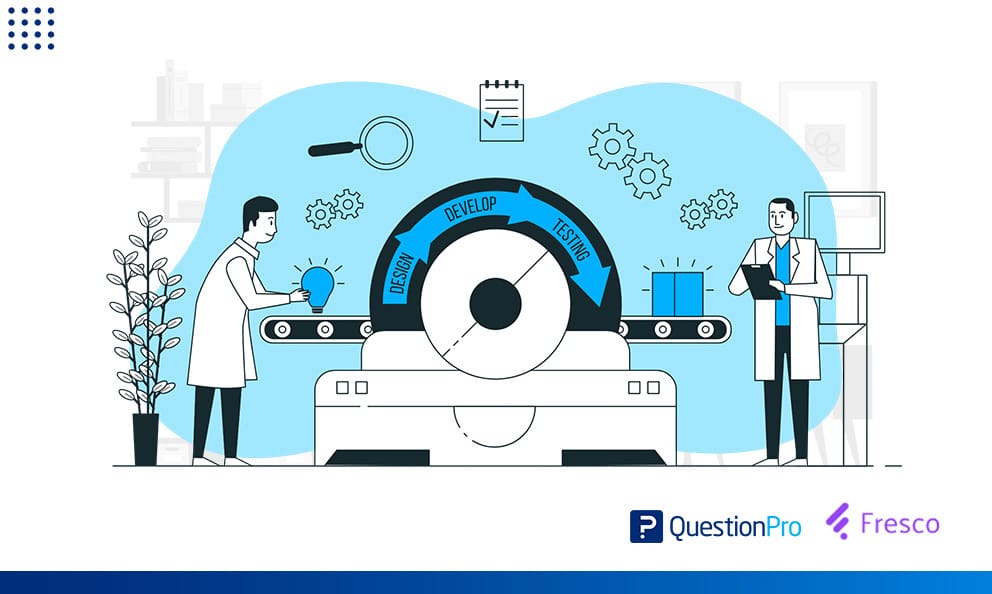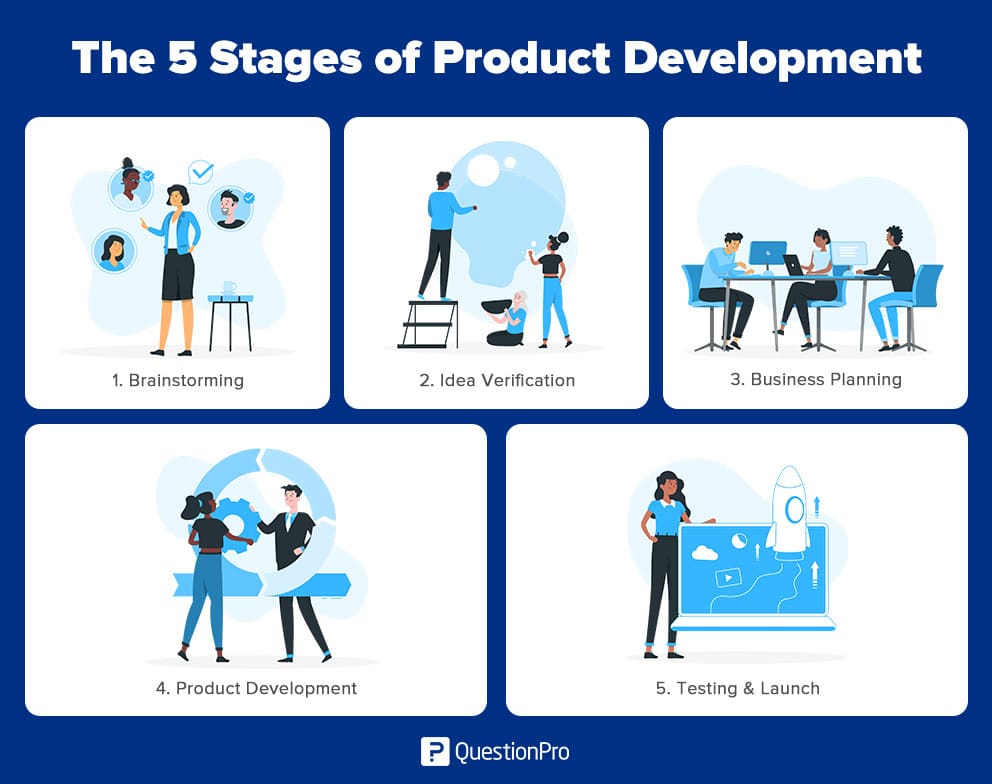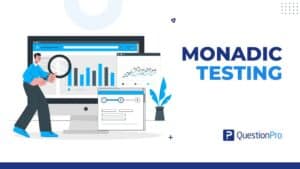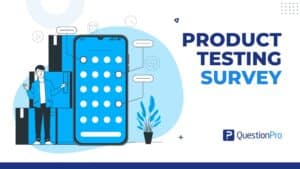
Creating a new product is a fascinating endeavor that can be somewhat of a mystery if you haven’t previously been a part of it. Understanding how a product goes from an initial vision to a refined launch is a complicated process and one that we hope to make more straightforward today. Let’s talk about product development.
This article will define product development, discuss the different phases that each product goes through, and highlight some visual methodologies that help improve the product development process.
What is Product Development
Product development refers to the lifecycle of a product’s evolution from the initial concept, to its creation, and finally, its launch. However, the launch of a product does not end the product development cycle, and products can continue to develop and improve long after their launch.
LEARN ABOUT: Customer Lifecycle
The idea of product development is an umbrella term to describe the phases and goals that go into bringing a new product to market or improving an existing product. There is no one product development strategy that is strictly correct; there are a ton of different ways products can be created and improved.
That being said, there are some general steps that should be followed to ensure a product grows appropriately, and below we’ll highlight those steps in detail.
Product Development vs Product Management
One of the biggest confusions around product development is how it’s different from product management. It can be easy to mix these two terms up when in reality they refer to completely different things.
There is often confusion surrounding the term product development because in some organizations it can refer to different things. Occasionally, product development refers to the development team that is responsible for creating the proposed solution. In this case, the scope of product development is narrowed to focus on a specific team, but in our context, it refers to the overall system that is behind bringing a product to market.
Product management is a more uniform term and refers to the process of overseeing the creation of the product. This means that product managers are responsible for looking after the development of the solution, ensuring it has all of the necessary goods baked into it, and delivering it on time. In relation to product development, product management is one of the many teams that brings a successful product to fruition.
The 5 Stages of Product Development
There are many unique phases of product development and depending on the organization these phases can be completely different. Despite organizational differences, there are some general steps that everyone should follow. These are the 5 stages of product development.

Brainstorming
The first stage in the product development process is the brainstorming phase. Ideally, the team will have an understanding of a general product they want to create and this is where that idea gets refined.
In order to create a successful idea, it has to have some relation to the customer’s need, the market gap, and how it can integrate with other products or businesses. This ideation stage will lay the groundwork for the rest of the project and it’s important that this phase really outlines a solid vision that will later be expanded upon and executed.
If you’re struggling to brainstorm new ideas, it might be smart to try an online whiteboard brainstorming strategy.
Idea Verification
After you’ve brainstormed some viable ideas, it’s important that these are verified against other ideas in the batch and current market solutions to see how actionable they are.
In order to do this, you need to gauge employee feedback, customer feedback, and other businesses to ensure your idea has legs.
At the end of the verification process, it will be time for the team to decide on a single solution. This will be the idea that is developed and released so it’s important that everyone gets an opinion and a say in this process. After this, it will be time to start creating a plan to turn this concept into reality.
Business Planning
The business planning phase is where the logistics are prioritized. This includes developing a business model for the idea, proposing a budget for the development, and creating a clear understanding of the target market.
The business planning phase is really important to the product development cycle because it deals will all the external elements that are important to the product’s success. The product might be brilliant on its own but without the proper positioning, it will struggle to reach its full potential.
In this phase, using templates like a SWOT analysis matrix is vital because they allow teams to visualize important elements, like potential opportunities and threats, and collaborate on them in real-time.
Collaborating on an online whiteboard makes using these templates easy and grants everyone permanent access to the board, so rather than having to flip through notes or ask a colleague people can have access to the source material when in need of context.
Product Development
Product development is the process of designing and building the product itself. The creation process almost always begins with designing the product. This can often occur in parallel to the other phases because it’s one of the most important pieces to have nailed down before development begins, but at the beginning of the creation cycle, there should always be time to reference designs and ensure they’re understood top to bottom.
At the end of the development stage, there should be a fully fleshed-out product that is ready for launch. While it might be fully completed at the end of this phase, it’s important to remember that changes might have to be made after the testing stage, so this product might be revisited and improved.
Testing & Launch
The last stage in the product development process is for testing and launch. After the product is built, it’s important it receives rigorous stress testing to ensure it can stand up to any usage scenario. Especially when the product is software, there could be a ton of things that go wrong with it, so it must be airtight.
After testing is complete, it’s time to launch your product. This is where the business planning phase kicks in to launch promotion campaigns and market outreach. Much of the planning work leads up to this moment and will influence the success of the launch, so it’s important to plan accordingly.
Product Development Methodologies
Following a product development process isn’t easy, and to make it more straightforward many teams use visual product development methodologies. These are structures that guide teams through their projects and help them achieve success through unique sets of guidelines. In order to best understand these methodologies, we’ll outline a few popular ones here.
Agile
The Agile methodology refers to a set of principles that can be loosely defined as:
- Individuals and interactions over processes and tools
- Working software over comprehensive documentation
- Customer collaboration over contract negotiation
- Responding to change over following a plan
These guidelines help teams focus on a couple of important things. First, ensuring that you finish with a working end product is the number one priority. Additionally, it’s important that teams be flexible in Agile in order to accommodate for changing deadlines and restrictions. This allows teams to meet the changing needs of their client without compromising the project.
The Agile methodology is a really helpful mindset for teams to understand and is helpful to improve collaboration within teams. The emphasis on incremental delivery and quick responses to customer changes means many teams find agile to be a great strategy to improve overall efficiency.
LEARN ABOUT: Agile Market Research
Kanban
Kanban is a more specific structure that falls under the Agile methodology. It’s a workflow prioritization structure that, similar to Agile, emphasizes the value of incremental delivery.
Kanban is a very collaborative framework because it’s focused on visualizing a team’s workflow so they can understand what tasks are in progress and what’s coming up next. This leads to continuous improvements in the work cycle and can help reduce the time between sprints.
The center of focus is the Kanban board, which is the board that helps structure the team’s task management. It’s divided into four columns: Backlog, On Deck, In Progress, and Completed. These columns will house tasks that correspond to their status, and as these tasks get moved through the workflow they will change columns and eventually move to the completed section. By manually shifting tasks and doing so on a shared board, everyone will always have an updated view on the status of the project as a whole as well as everyone’s individual responsibilities.
This really helps improve communication within the team as well as overall efficiency.
Scrum
Scrum takes some principles from Agile and builds on them in a more rigid way. Where Kanban is meant to be very flexible and fluid, scrum is rigid and formulaic.
Scrum requires teams to work in very strict sprints were they complete tasks and deliver incremental results over the course of multiple sprints. The team collaborates heavily on getting these done, and at the end of each sprint they conduct a retrospective analysis to see what can be improved and what worked well. By doing this, scrum teams place a huge emphasis on improvement over time. These cyclical improvements help improve efficiency for the team and will ideally result in a perfectly efficient workflow.
There are multiple items required by scrum teams including a product backlog, sprint backlog, and increments. Additionally, there are multiple required roles as well. These are the product owner, scrum master, and development team.
All of these parts make scrum an efficiency machine, turning cogs in just the right way so projects can be completed successfully over and over again.
There is a blog Idea Management Software published by QuestionPro that can be helpful for you
Conclusion
Product development is a mandatory process to prioritize if you are looking to bring a new product to market, and depending on your goals there are many different ways to go about it. Hopefully, this guide helped outline the product development process and the various ways to go about achieving a successful product launch.







